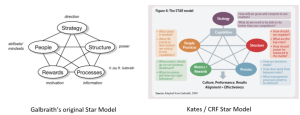Getting radical: designing adaptable organizations
What you should do when dealing with radical change.
How do we design an effective organization now that continuous change is the norm? A research report written by the Corporate Research Forum (CRF) addresses this unprecedented challenge, drawing on insights and leading practices of experts in the field. The report highlights the need for a process of continuous organization design, one that is driven by in-house HR teams and seeks to adjust designs in response to evolving strategy. But with only 39% of research participants feeling they have strong organization design skills within HR, there is a skills gap for HR to bridge.
Dealing with radical change: what should businesses do?
At the Amsterdam report launch event (slides from the day can be found here), a senior audience came together to discuss this topic. Geoffrey Matthews, co-author of ‘Engaged,’ talked through the changes experienced by Nestle over a series of years, moving from national fiefdoms, driven by local market requirements to – when introducing Nespresso – a product-led global marketing design. Meanwhile, Amy Kates, co-founder of Kates Kesler Organization Consuting, drew on her 25 years of coaching C-Suites on organization design thinking to share an evolved version of Galbraith’s Star model – adding ‘capabilities’. The expertise, stories and years of experience were superb.
The challenge is what can help guide us when the level of change is even more extreme. The question was asked: how do you design an organization when the past is little guide to the future – when radical change is needed, and the activities, roles and headcount all have to move dramatically?
Attendees at the OrgVue-sponsored CRF breakfast told fascinating stories, in terms of the challenges their business are facing and the company’s response:
- A food business facing cost pressure is consolidating its factory footprint. It has set up a 30 person digital department, which runs as a project hub. People cycle in and out of roles, and no-one stays beyond a fixed 18 month period, so as to keep relevance to business decisions.
- A pharma business facing pressure from prospective acquirers has restructured itself, and expects the ongoing need to re-shape itself to continue, year-in, year-out.
- An industrial company accelerated its move to digital (and reduced costs) by switching the entire 70,000 person organization over to Google Docs, Google Drive, Google Hangouts etc.
Several companies described setting up initiatives to cannibalize their existing businesses; others described a continuous, lower intensity pressure to tweak the business model, to continue to optimize and find performance improvement.
HR needs to play a more central role in organization design
The role of HR was described as selling change, communicating change, driving change. In the right circumstances, HR is a key part of the Leadership team, with value to add on the culture and mindset that will support change in ways of working.
One company described the move to self-service as empowering for managers and liberating for HR. For example, giving line managers the right systems let them be responsible for recruitment end-to-end. HR was then freed up to analyze future capability and quantify gaps.
Breakfast attendees then used a set of labels to prompt discussion of the business strategy, business unit by business unit: for example, to ‘cannibalize’, ‘gradually improve’, ‘grow strongly,’ stay ‘steady as she goes’ … or be the ‘rabbit in the headlights’.
